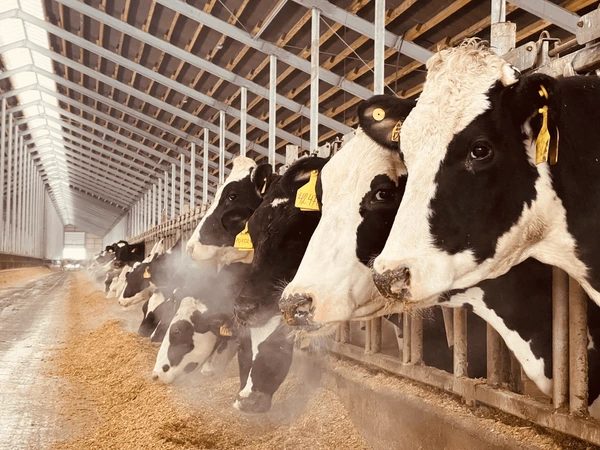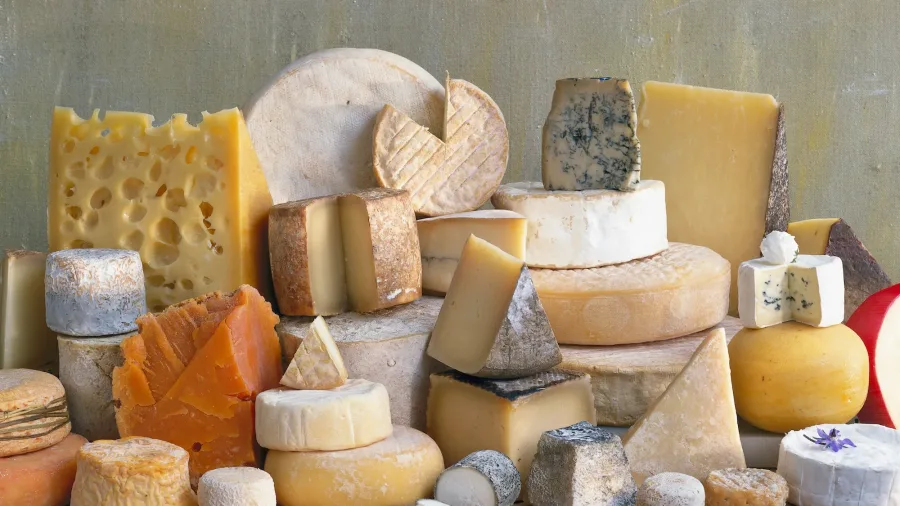Uncover how falling grain prices are alleviating financial pressures for dairy farms. Could reduced feed expenses enhance the profitability of the dairy sector? Find out more.

The agricultural sector is rife with anxiety as plummeting grain prices disrupt farming communities. While crop producers bear the brunt, a glimmer of hope shines in the dairy industry. Here, reduced grain prices mean cheaper feed, offering dairy producers a significant opportunity to enhance their profit margins. Falling grain prices have varying impacts on the diverse agricultural landscape. For dairy producers, low-cost feed is a boon, alleviating expenses that can consume up to 50% of income. Each farm must assess feed costs based on specific needs and forage quality. This scenario showcases a divided world in agriculture. Grain growers scramble to maintain profitability, yet dairy farmers benefit from reduced operational costs.
The Feed Puzzle: A Crucial Component in Dairy Farm Economics
In dairy farming, feed expenses are significant outlays that affect financial sustainability. Depending on internal feed production, these expenses could account for 20% to 45% of a dairy farm’s total revenue. Dairy finance expert Gary Sipiorski points out that purchasing all feed may drive this cost to almost 50% of the milk check, underscoring the critical requirement of innovative feed management to preserve profitability. You play an essential part in this process.
| Month | Feed Cost ($/cwt) | Year-over-Year Change (%) |
|---|---|---|
| January | 10.50 | -5% |
| February | 10.30 | -6% |
| March | 10.00 | -8% |
| April | 9.80 | -9% |
| May | 9.50 | -11% |
Grain Price Declines: A Financial Boon for the Dairy Sector
Lower grain prices have brought financial comfort to dairy farmers by lowering a significant outlay and increasing profitability.Ag Insights president Phil Plourd notes this pattern, pointing to the concurrent cost drop and increase in milk futures. This double benefit makes margins more appealing than in the prior two years. Although Plourd warns that the circumstances may change, the present financial status of the dairy sector is bright.
Driven by reduced feed costs and robust milk futures, Plourd notes a good profit increase for dairy farmers. Although theoretical models point to favorable circumstances, actual complexity, like erratic weather and market volatility, might skew this view. Producers should so approach the matter with strategic preparation and cautious hope.
Strategic Steps for Capitalizing on Declining Grain Prices
Jay Matthews is Ever’s vice president in the feed and dairy producer segment.Ag emphasizes the long-term advantages of lowering grain prices for dairy farmers. Given consistent milk prices, margins are right now rather appealing. Especially if waiting for improved base values on maize and protein, Matthews advises growers to enter fresh crop physical purchases and have hedges in place. However, He advises against complacency, given that erratic weather and seasonal variations might compromise these benefits. He emphasizes the danger of managed money covering their net short position in the summer, mainly depending on unfavorable weather. Protecting profits and maximizing profitability among market volatility and environmental uncertainty depend on deliberately controlling feed cost risk.
The dairy industry has to be alert about possible hazards even if dropping grain prices indicates a promising future. Jay Matthews emphasizes the importance of a proactive strategy, as erratic weather and seasonal variations might undermine existing benefits. Managed money covering net-short positions in lousy weather could set off quick changes in the market. Mainly maize and protein, dairy farmers should create robust risk management plans involving hedging for new crop holdings and tracking basis levels. Dairy farmers may better negotiate uncertainty and maintain profitability by being ready.
Historical Trends Highlight Substantial Decrease in Feed Costs
Analyst Monica Ganely of the Daily Dairy Report and Quarterra founder notes a significant decrease in feed expenses. May’s feed costs were about $3 per cwt. Less than last year, the most significant drop since 2021. This drop gives dairy companies substantial financial benefits that help them maintain good profit margins.
The Bottom Line
For dairy farmers, the declining trend in grain prices provides a significant benefit regarding feed expense reduction. This financial relief improves profit margins and gives the dairy industry fresh hope—a rare occurrence given more general agricultural difficulties. To fully enjoy these economic advantages, producers have to be proactive. This covers planned feed purchases and readiness for weather and market changes. Using hedging techniques and being alert helps dairy farmers protect their margins against volatility. Producers should keep educated, review their financial plans often, and be ready to react quickly to developments. This time of low feed prices should be both a call to action and a possibility to guarantee a strong future for dairy farming.
Key Takeaways:
- Lower grain prices are reducing feed costs for dairy producers, which can take up a substantial portion of a dairy farm’s gross income.
- Independent consultant Gary Sipiorski estimates feed costs to range between 20% to 45% of gross income, depending on farm specifics.
- Phil Plourd from Ever.Ag Insights highlights concurrent decreases in feed costs and high milk futures, resulting in strong prospective margins.
- Ever.Ag’s Jay Matthews advises dairy producers to secure new crop physical purchases and hedges amid favorable margins and current market conditions.
- Analyst Monica Ganely provides data showing May’s feed costs significantly lower than last year, delivering the lowest levels since 2021.
- Producers are urged to stay cautious of market volatility and environmental changes that could affect these gains.
Summary:
The agricultural sector faces a crisis due to falling grain prices, disrupting farming communities. However, the dairy industry has seen a bright spot as reduced grain prices mean cheaper feed, offering a significant opportunity to enhance profit margins. Low-cost feed can alleviate expenses that consume up to 50% of a dairy farm’s income. In dairy farming, feed expenses are significant outlays that affect financial sustainability, accounting for 20% to 45% of a farm’s total revenue. Dairy finance expert Gary Sipiorski points out that purchasing all feed may drive this cost to almost 50% of the milk check, underscoring the critical requirement of innovative feed management to preserve profitability. Lower grain prices have brought financial comfort to dairy farmers by lowering a significant outlay and increasing profitability. However, actual complexity, like erratic weather and market volatility, might skew this view. Producers should approach the matter with strategic preparation and cautious hope. Historical trends show a significant decrease in feed costs, with May’s feed costs being about $3 per cwt, the most significant drop since 2021.












